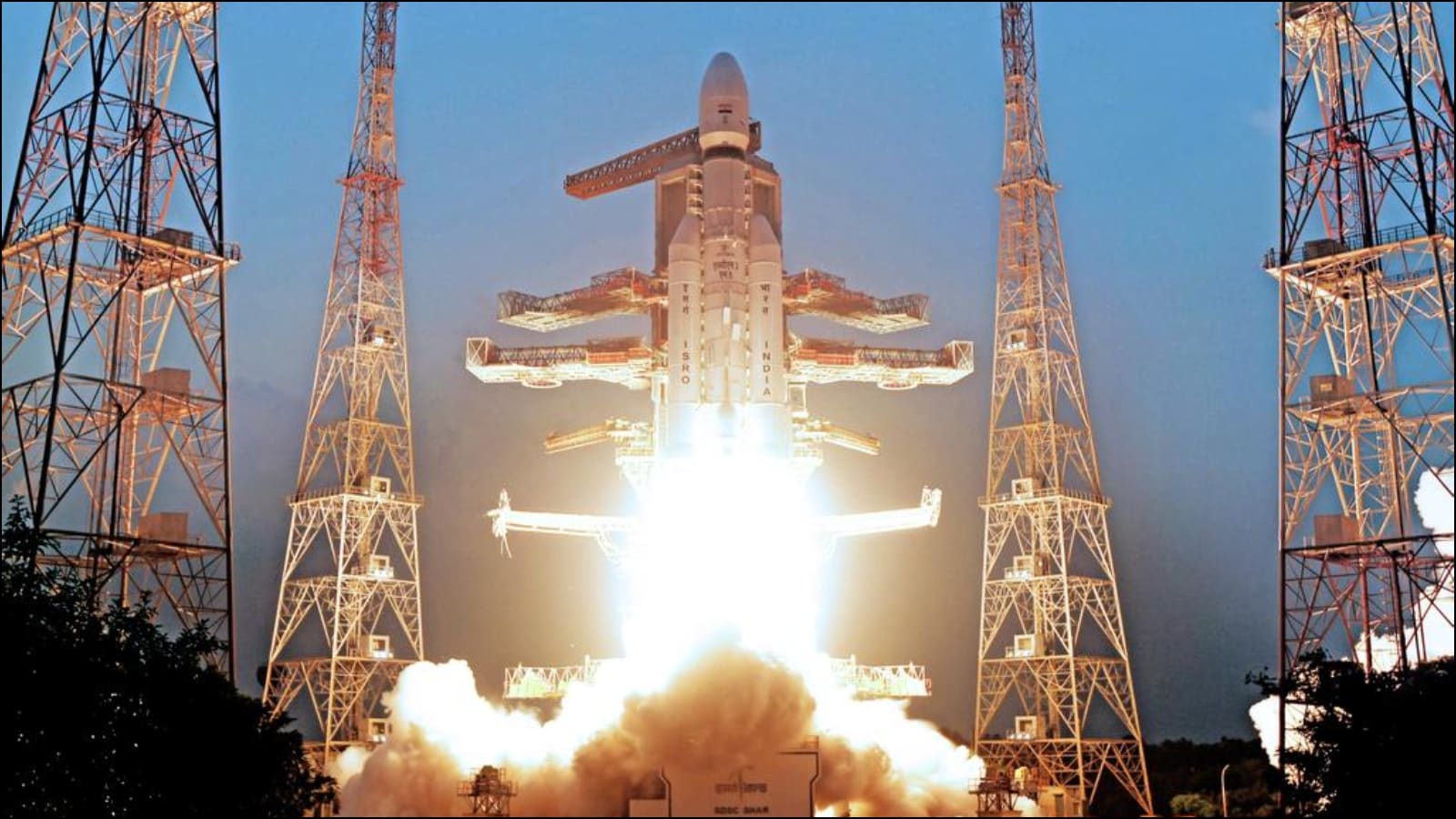Copyright news18

In a remarkable stride toward technological and strategic self-reliance, the Indian Space Research Organisation (ISRO) successfully launched the Indian Navy’s GSAT-7R (CMS-03) satellite on November 2, 2025, from the Satish Dhawan Space Centre, Sriharikota. This mission, executed aboard the trusted LVM3-M5 heavy-lift launch vehicle, marks not only a milestone in India’s space capabilities but also a defining moment in the modernisation of the country’s maritime defence communications network. At 4,400 kilograms, GSAT-7R stands as India’s heaviest communication satellite ever launched into the Geosynchronous Transfer Orbit (GTO) from domestic soil. More significantly, it is a fully indigenous creation, a testament to India’s maturing ability to design, develop, and deploy mission-critical satellites that serve both civilian and defence objectives. The satellite represents a bold stride toward atmanirbharta (self-reliance) in strategic technologies, underscoring India’s vision of secure, sovereign control over its space and defence infrastructure. Strengthening India’s Maritime Defence GSAT-7R is designed specifically for the Indian Navy, replacing the decade-old GSAT-7 (Rukmini) launched in 2013. Together with its sister satellite GSAT-7A, which serves the Indian Air Force, it completes a powerful communications network that ties together India’s sea and air warfare capabilities. The new satellite will provide seamless, secure communication across naval assets linking warships, submarines, aircraft, and shore-based command centres in real time. Its high-capacity multi-band transponders and indigenous payload systems will ensure robust, encrypted communication across the vast expanse of the Indian Ocean Region (IOR). With this, India effectively reduces and ultimately eliminates its dependence on foreign commercial satellite systems such as the Inmarsat constellation, which has long been a vulnerability in the nation’s defence communication chain. This independence is not just technical; it is strategic. In an era of hybrid warfare, where information dominance and secure data flow can determine the outcome of conflict, GSAT-7R provides India with an unbroken, indigenous communication link immune to external disruption or surveillance. The Technological Triumph The mission’s success owes much to ISRO’s precision and innovation. The LVM3-M5, popularly called ‘Bahubali’ for its heavy-lift capabilities, flawlessly carried the massive satellite into its initial orbit. This three-stage launch vehicle, with two solid boosters (S200), a liquid core (L110), and a cryogenic upper stage (C25), has already proven its mettle with previous missions, including Chandrayaan-3, which made India the first country to land near the Moon’s south pole. From there, GSAT-7R will follow the familiar yet intricate journey to its final geostationary slot 36,000 kilometres above Earth. Its Liquid Apogee Motor (LAM) will execute multiple precision firings over several days to achieve a stable geostationary orbit. After this orbital fine-tuning, it will take around a month before the satellite becomes fully operational and integrated into the Navy’s communication network. This level of sophistication in both satellite design and launch operations reflects how far India’s space program has evolved. Just a few decades ago, India relied heavily on foreign assistance for even basic communication satellites. Today, ISRO not only builds but also launches such complex payloads entirely in-house, marking a transition from dependency to global competitiveness. Strategic And Economic Implications The GSAT-7R mission, funded by the Ministry of Defence at a cost of Rs 1,589 crore, is more than just a defence project; it is an investment in India’s strategic autonomy. By controlling its defence communication architecture end-to-end, India safeguards its maritime interests in a region increasingly contested by global powers. The Indian Ocean is no longer a neutral trade corridor; it is a strategic theatre where China’s growing naval presence poses new challenges. GSAT-7R thus serves as both a shield and a signal, a shield against information warfare and a signal of India’s resolve to protect its maritime frontiers with indigenous technology. With enhanced Maritime Domain Awareness (MDA), the Navy will be able to monitor real-time activity across critical sea lanes, track potential threats, and coordinate joint operations more effectively. A Testament To ‘Make In India’ And Defence Synergy The success of GSAT-7R is also a powerful validation of the ‘Make in India’ initiative and the synergy between ISRO and the Indian Armed Forces. It shows how the integration of space science and defence strategy can yield transformative results for national security. As India continues to develop next-generation satellites under the GSAT series, the focus is clearly shifting toward indigenous innovation, cyber resilience, and dual-use capabilities that serve both civilian and military needs. In the long run, missions like GSAT-7R will lay the foundation for India’s comprehensive defence-space ecosystem, including satellite constellations, autonomous launch platforms, and space-based surveillance systems. The line between aerospace and defence is blurring, and India is positioning itself at the forefront of this evolution. The launch of GSAT-7R is far more than a technical triumph; it is a declaration of India’s strategic maturity. It cements ISRO’s reputation as one of the world’s most reliable space agencies and reaffirms India’s commitment to self-reliance in defence technology. As the satellite begins its silent orbit high above Earth, it carries with it not only advanced electronics and transponders but also the aspirations of a nation that now speaks the language of space power and sovereignty with confidence. GSAT-7R, in essence, is not just a satellite; it is India’s new voice across the oceans. The writer is a technocrat, political analyst, and author. He pens national, geopolitical, and social issues. His social media handle is @prosenjitnth. Views expressed in the above piece are personal and solely those of the author. They do not necessarily reflect News18’s views.



